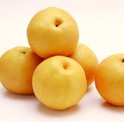Caring for an organic pear tree is a rewarding endeavor that requires a blend of knowledge, patience, and a genuine love for nature. As an organic pear supplier, I've had the privilege of nurturing these beautiful trees and witnessing the fruits of my labor. In this blog, I'll share my insights on how to care for an organic pear tree, from planting to harvesting.


Selecting the Right Variety
The first step in caring for an organic pear tree is selecting the right variety for your climate and soil conditions. There are several types of pears, each with its own unique flavor, texture, and growing requirements. Some popular varieties include the Lovely Pear, Shinseiki Pear, and Sweet Pear.
When choosing a variety, consider the following factors:
- Climate: Pears thrive in temperate climates with cold winters and warm summers. Some varieties are more cold-hardy than others, so choose a variety that is suitable for your region.
- Soil: Pears prefer well-drained, fertile soil with a pH between 6.0 and 7.0. If your soil is heavy or clayey, consider amending it with organic matter such as compost or manure.
- Pollination: Most pear trees require cross-pollination from another pear tree of a different variety to produce fruit. Make sure to plant at least two different varieties of pear trees within 50 feet of each other to ensure proper pollination.
Planting Your Pear Tree
Once you've selected the right variety, it's time to plant your pear tree. Here are some tips to help you plant your tree successfully:
- Choose the right location: Select a location that receives full sun for at least six hours a day and has well-drained soil. Avoid planting your tree in low-lying areas where water may accumulate.
- Prepare the soil: Dig a hole that is twice as wide and deep as the root ball of your tree. Mix in some organic matter such as compost or manure to improve the soil structure and fertility.
- Plant the tree: Place the tree in the hole and backfill with soil, making sure to firm the soil around the roots. Water the tree thoroughly to settle the soil.
- Stake the tree: If your tree is tall or top-heavy, stake it to prevent it from being blown over by the wind. Use a soft material such as tree ties or rubber bands to attach the tree to the stake.
Watering and Fertilizing Your Pear Tree
Proper watering and fertilizing are essential for the health and growth of your pear tree. Here are some tips to help you water and fertilize your tree:
- Watering: Pear trees need regular watering, especially during the first few years after planting. Water your tree deeply once a week, or more often if the weather is hot and dry. Make sure to water the soil around the tree, not the leaves.
- Fertilizing: Pear trees benefit from regular fertilization to promote healthy growth and fruit production. Apply a balanced fertilizer such as 10-10-10 in the spring and again in the fall. Follow the instructions on the fertilizer package for the recommended application rate.
Pruning Your Pear Tree
Pruning is an important part of caring for an organic pear tree. Pruning helps to shape the tree, remove dead or diseased branches, and promote healthy growth and fruit production. Here are some tips to help you prune your pear tree:
- Prune at the right time: The best time to prune your pear tree is in the late winter or early spring, before the tree begins to bud. This will help to minimize the risk of disease and damage to the tree.
- Use the right tools: Use sharp, clean pruning shears or a pruning saw to make clean cuts. Avoid using dull or dirty tools, as this can damage the tree and spread disease.
- Prune for shape: Prune your tree to shape it into a central leader or an open center. A central leader tree has a single main trunk with branches growing off of it, while an open center tree has several main branches growing from the base of the tree.
- Remove dead or diseased branches: Remove any dead, diseased, or damaged branches from your tree. This will help to prevent the spread of disease and improve the overall health of the tree.
Pest and Disease Control
Pest and disease control is an important part of caring for an organic pear tree. Here are some tips to help you control pests and diseases:
- Monitor your tree regularly: Check your tree regularly for signs of pests and diseases. Look for holes in the leaves, discoloration, or wilting. If you notice any problems, take action immediately.
- Use natural pest control methods: There are several natural pest control methods that you can use to control pests on your pear tree. These include using insecticidal soaps, neem oil, and beneficial insects such as ladybugs and lacewings.
- Practice good sanitation: Keep your tree and the area around it clean and free of debris. Remove any fallen leaves, fruit, or branches from the ground, as this can harbor pests and diseases.
- Use disease-resistant varieties: When choosing a pear tree, choose a variety that is resistant to common diseases such as fire blight and pear scab.
Harvesting Your Pears
Harvesting your pears at the right time is essential for the best flavor and texture. Here are some tips to help you harvest your pears:
- Know when to harvest: Pears are ready to harvest when they are firm but slightly soft to the touch. The color of the pear may also change slightly when it is ripe.
- Use the right tools: Use a pair of pruning shears or a fruit picker to harvest your pears. Avoid pulling the pears off the tree, as this can damage the tree and the fruit.
- Handle the fruit carefully: Handle the pears gently to avoid bruising or damaging them. Place the pears in a basket or crate and store them in a cool, dry place.
Conclusion
Caring for an organic pear tree is a rewarding experience that requires a little bit of knowledge and effort. By following these tips, you can ensure that your pear tree grows healthy and produces delicious fruit for years to come. If you're interested in purchasing organic pears, please feel free to contact us to discuss your needs. We look forward to working with you!
References
- University of California Agriculture and Natural Resources. (n.d.). Pear Production Manual. Retrieved from https://ucanr.edu/sites/pear/
- Oregon State University Extension Service. (n.d.). Growing Pears in the Home Garden. Retrieved from https://extension.oregonstate.edu/catalog/pdf/pnw/pnw0506.pdf
- University of Minnesota Extension. (n.d.). Growing Pears in Minnesota. Retrieved from https://extension.umn.edu/fruit/growing-pears-minnesota





